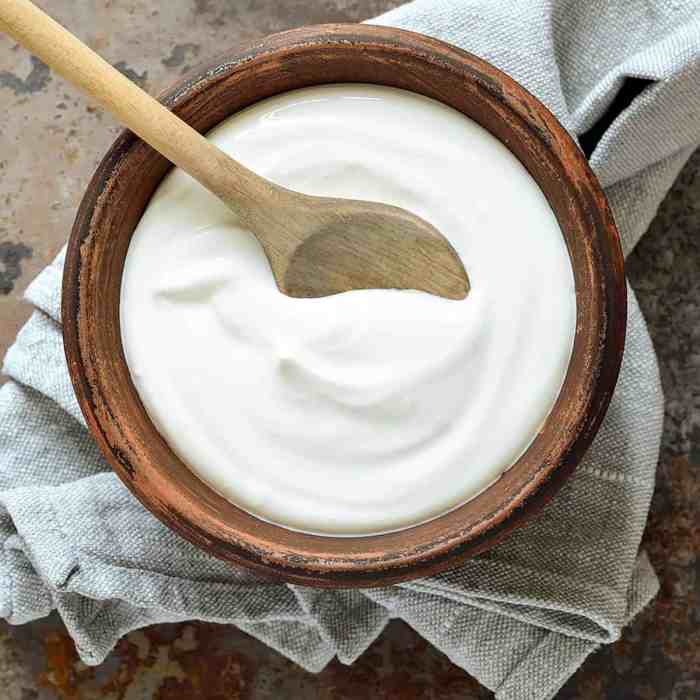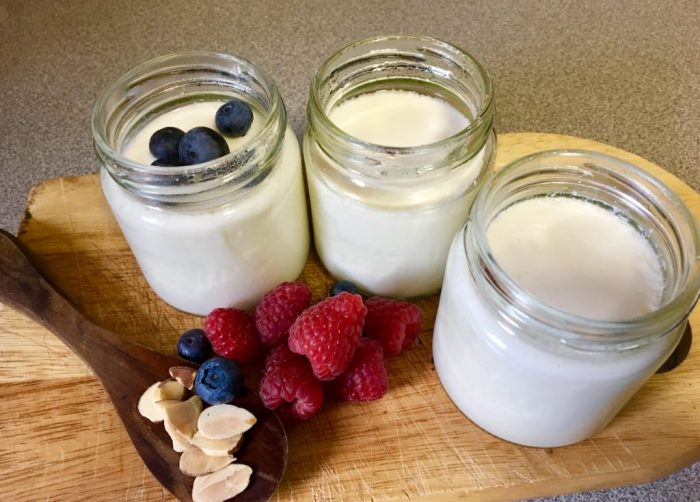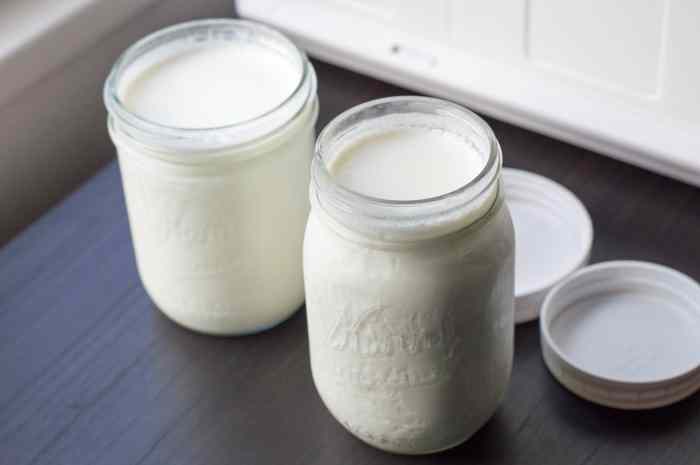Embark on a yogurt-making journey with ‘How to Make Yogurt: 5 Steps to Homemade Yogurt.’ Delve into the world of homemade yogurt creation with essential tips and tricks for a successful culinary adventure.
Learn the step-by-step process of crafting creamy yogurt from scratch, ensuring a delightful and fulfilling experience in your kitchen.
Ingredients and Equipment

When making yogurt at home, it is essential to have the right ingredients and equipment to ensure a successful fermentation process.
Ingredients
- Fresh milk: Choose whole milk for a creamier yogurt, or opt for low-fat or non-fat milk for a lighter version.
- Yogurt starter culture: This can be store-bought yogurt with live active cultures or a yogurt starter powder.
- Sweetener (optional): Sugar, honey, or any other sweetener can be added according to taste preferences.
Equipment
- Saucepan: To heat the milk gently without scorching it.
- Thermometer: To monitor the temperature of the milk accurately.
- Insulated container: For incubating the yogurt mixture at a stable temperature.
- Whisk or spoon: For stirring the milk and yogurt culture together.
- Clean jars or containers: To store the finished yogurt in the refrigerator.
Using fresh milk and a reliable yogurt starter culture is crucial for successful fermentation, as they provide the necessary bacteria for the yogurt-making process.
Preparation Steps

To make homemade yogurt, the first step involves preparing the milk to create the perfect environment for the fermentation process. This process includes heating the milk, cooling it down, and potentially straining or flavoring the yogurt before allowing it to ferment.
Heating the Milk
Start by heating the milk in a saucepan over medium heat. Heat the milk slowly and stir frequently to prevent scorching. Use a thermometer to monitor the temperature, aiming for around 180°F (82°C). Heating the milk helps to denature the proteins and kill any unwanted bacteria that could interfere with the yogurt culture.
Cooling the Milk
Once the milk reaches the desired temperature, remove it from the heat and allow it to cool down to around 110°F (43°C). Cooling the milk is crucial to avoid killing the beneficial bacteria in the yogurt culture. You can speed up the cooling process by placing the saucepan in a cold water bath.
Straining or Flavoring (Optional)
If you prefer a thicker consistency, you can strain the yogurt by using a cheesecloth or a fine mesh strainer. This step removes excess whey, resulting in a creamier yogurt. Additionally, you can add flavorings such as vanilla extract, honey, or fruit preserves at this stage to customize the taste of your homemade yogurt.
Fermentation and Culturing

During the fermentation process of making yogurt, cultures or starters play a crucial role in transforming the milk into a thick and tangy yogurt. These cultures are typically live bacteria strains, such as Lactobacillus bulgaricus and Streptococcus thermophilus, which convert the lactose in the milk into lactic acid.
Ideal Temperature and Duration
For optimal fermentation, it is recommended to maintain a consistent temperature between 110°F to 115°F (43°C to 46°C). This temperature range provides a suitable environment for the cultures to thrive and multiply, leading to the desired texture and flavor of the yogurt. The duration of fermentation can vary depending on personal preference, but typically ranges from 4 to 12 hours.
Ensuring Successful Fermentation
- Use a reliable thermometer to monitor and maintain the fermentation temperature within the recommended range.
- Preheat the oven slightly and turn it off before placing the yogurt mixture inside to ferment. This helps create a warm and consistent environment for the cultures.
- Avoid disturbing the yogurt mixture during fermentation, as agitation can disrupt the culturing process and result in an inconsistent texture.
- Check the consistency and taste of the yogurt after the recommended fermentation time to determine if it meets your preferences. Adjust the fermentation time accordingly for future batches.
Last Recap

In conclusion, mastering the art of yogurt-making through ‘How to Make Yogurt: 5 Steps to Homemade Yogurt’ opens up a realm of possibilities for creating delicious and nutritious treats at home. Dive into this flavorful journey and savor the satisfaction of homemade yogurt perfection.